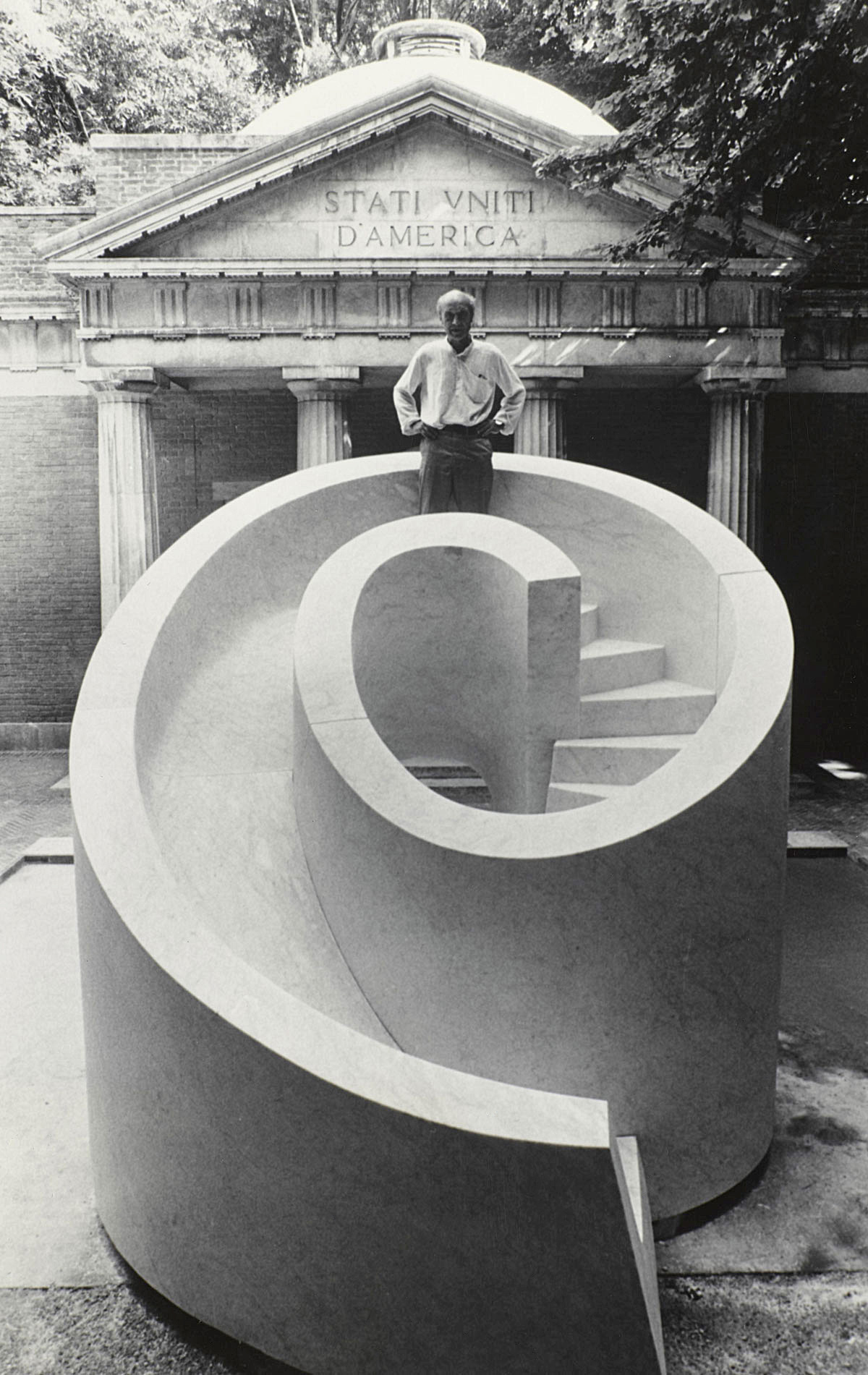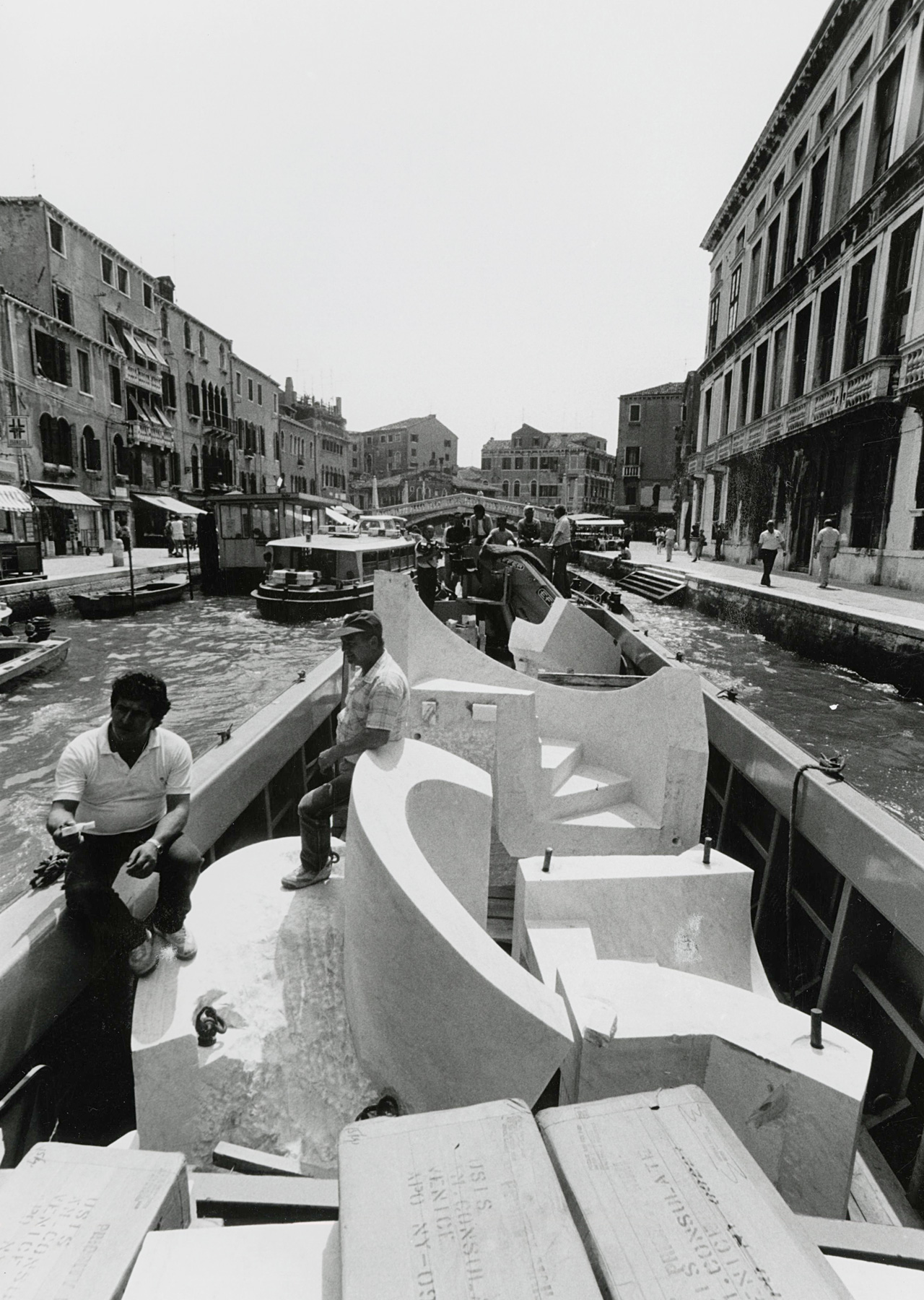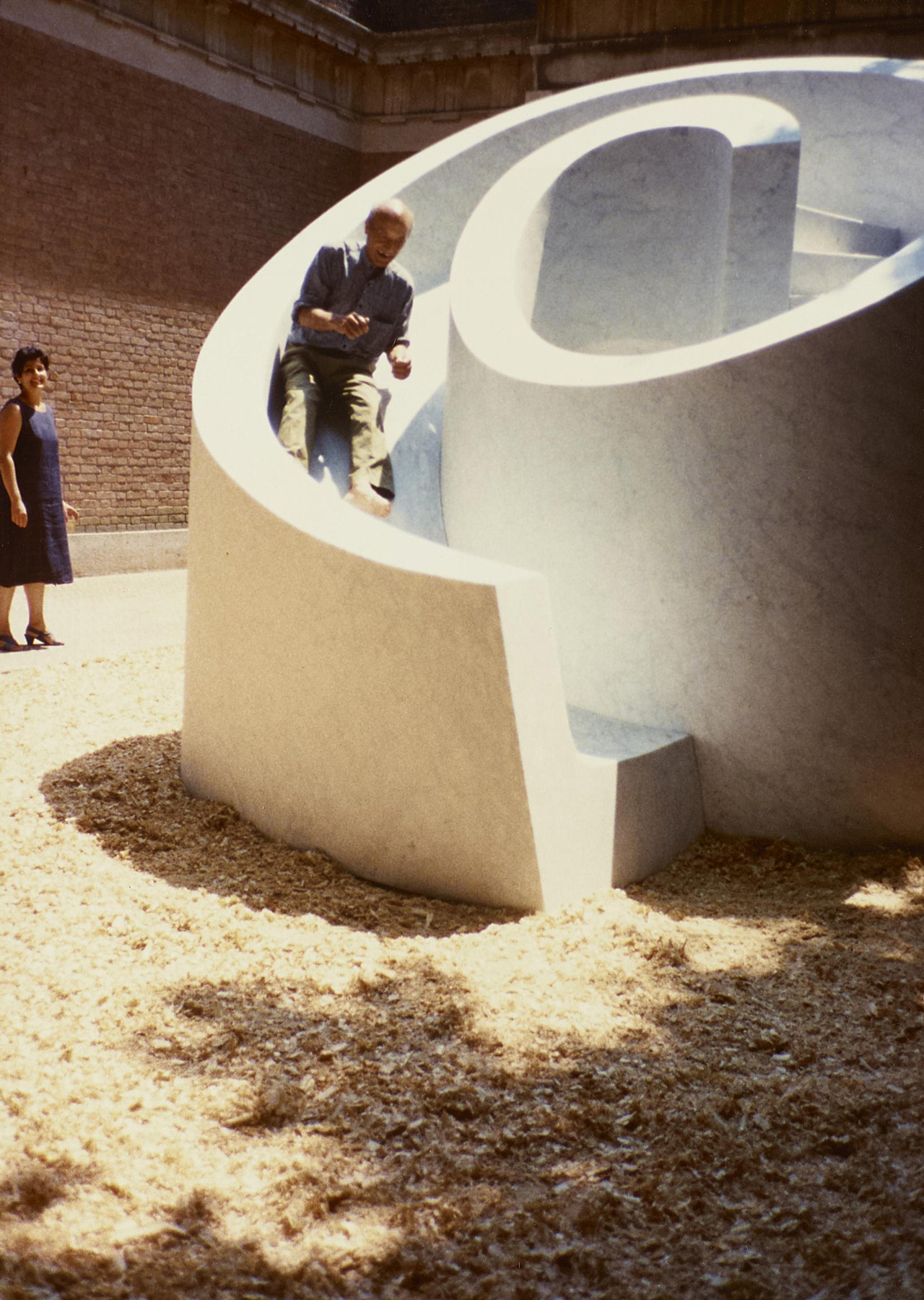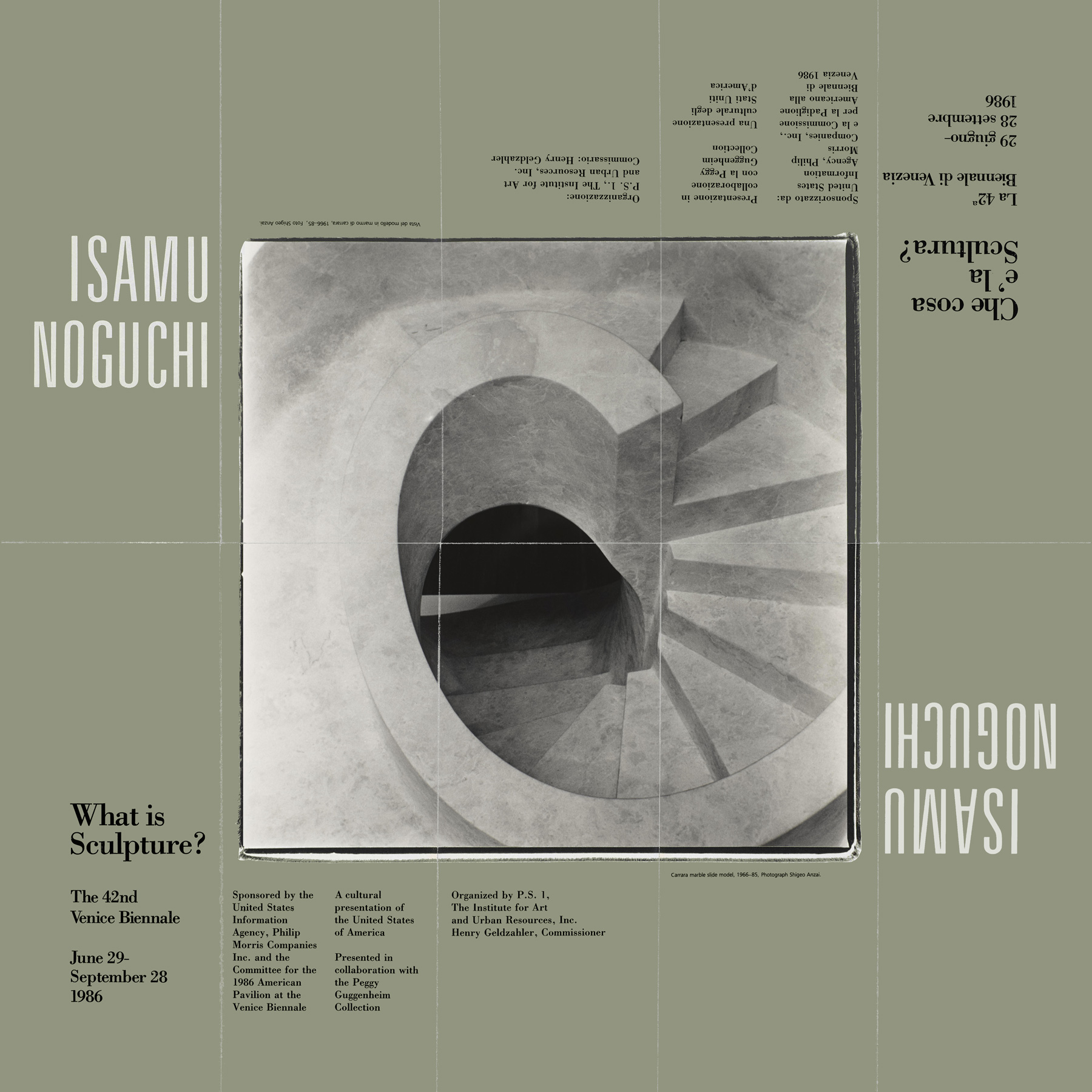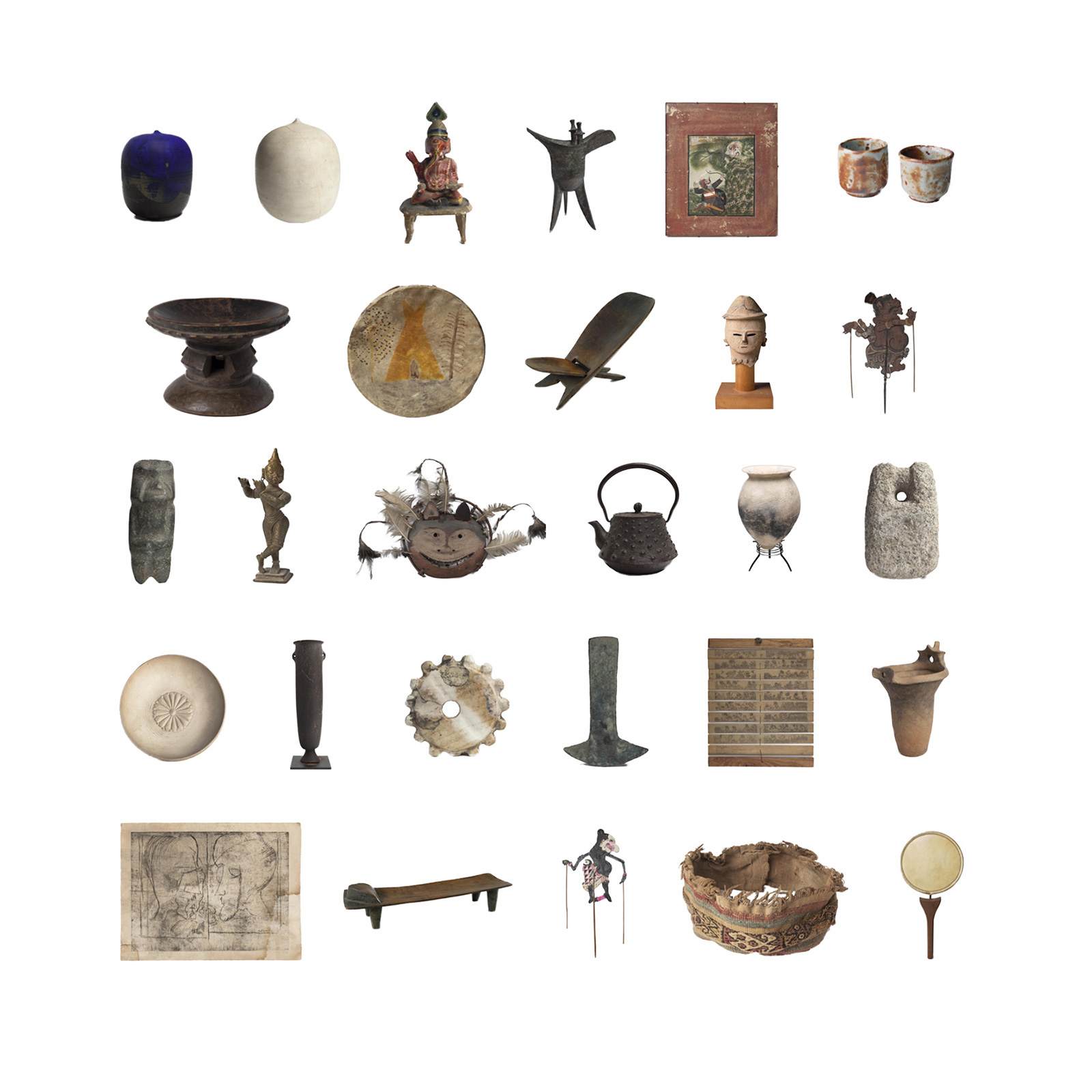By Glenn Adamson
Isamu Noguchi is not happy with the mulch. It is June 1986. He is standing in front of the United States Pavilion in the Giardini della Biennale. It is supposed to be a moment of triumph. Slide Mantra, the monumental sculpture that is the anchor of Noguchi’s presentation here at the Venice Biennale, has just been set in place.
